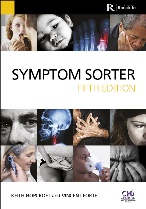The GP overview
This is a symptom that patients seem to fear or value – as a signifier of possible cancer or a justifier of antibiotics – far more than GPs. Most coughs are simply viral URTIs, but the GP should be aware of the various other possibilities, especially when the symptom is persistent.
Differential diagnosis
Common
- URTI.
- LRTI.
- Asthma.
- COPD.
- ACE inhibitor side-effect.
Occasional
- Smoking (including passive smoking).
- Lung tumour (primary or secondary).
- Rhinitis.
- GORD.
- Left ventricular failure.
- Bronchiectasis.
- Aspiration (for example, post stroke).
Rare
- Tuberculosis.
- Other medication side-effect (such as methotrexate).
- Pulmonary fibrosis.
- Fibrosing alveolitis.
- Extrinsic allergic alveolitis.
- Psychogenic.
- Laryngeal carcinoma.
- Inhaled foreign body.
- Diaphragmatic irritation (for example, abscess).
Ready reckoner
| URTI | LRTI | Asthma | COPD | ACE inhibitor side-effect | |
| Associated shortness of breath | No | Possible | Possible | Yes | No |
| Productive cough | Possible | Yes | Possible | Yes | No |
| Persistent or recurrent cough | No | No | Yes | Yes | Yes |
| Audible wheeze | No | Possible | Possible | Possible | No |
| On ACE inhibitor | Possible | Possible | Possible | Possible | Yes |
Possible investigations
Likely
None.
Possible
FBC, ESR/CRP, spirometry, PEFR
Small print
- Sputum, cardiac investigations, serum precipitins, hospital-based investigations such as CT scan and bronchoscopy.
- FBC – haemoglobin may be reduced in malignancy and chronic illness, WCC raised in infections, eosinophils raised in allergic conditions.
- ESR/CRP – raised in neoplasia, infective and inflammatory conditions.
- Chest X-ray – may show signs in a variety of the relevant differentials, such as LRTI, tumour and TB.
- Spirometry – may show characteristic patterns particularly in asthma, COPD and pulmonary fibrosis.
- Serial peak flow – may be helpful in diagnosis of asthma.
- Sputum – may be useful in diagnosing TB and occasionally helps guide antibiotic treatment in LRTI or exacerbation of COPD.
- Cardiac investigations, such as BNP or echocardiogram if LVF suspected.
- Serum precipitins in suspected extrinsic allergic alveolitis.
- Hospital-based investigations – further investigations such as CT scan or bronchoscopy may be required to clarify CXR abnormalities or pursue clinical suspicion.
Top tips
- Explain to patients that it is not unusual for the cough of a simple URTI to go on for three weeks – this will reduce unnecessary re-attendances.
- Take a careful history of provoking factors in the case of persistent cough – this is more likely to reveal the diagnosis than is chest auscultation.
- Have a low threshold for arranging a chest X-ray in the middle-aged and elderly smoker with a cough.
- ACE inhibitor-associated cough may come on many months – or even longer – after initiating treatment. It starts to improve within one to four weeks of stopping treatment, but may take three months to settle completely.
- In a persistent cough with a normal CXR and no chest signs, think asthma, GORD and rhinitis – a therapeutic trial for each may be needed to clinch the diagnosis.
Red flags
- Remember to ask about foreign travel. Atypical pneumonias are infrequent, and TB rare, but both can still present.
- Beware of persistent cough, weight loss and voice change in a smoker – arrange an X-ray to exclude malignancy.
- Night sweats with persistent cough suggest significant pathology such as TB or malignancy.
- Beware the patient on immunosuppressants: these drugs may alter the clinical picture, predispose to serious complications and in some cases (e.g. methotrexate) may be the cause of the cough itself.
Dr Keith Hopcroft is a GP in Laindon, Essex.
Dr Vincent Forte is a GP in Gorleston, Norfolk.
The fifth edition of Symptom Sorter is available from Radcliffe Publishing for £34.99.

Pulse July survey
Take our July 2025 survey to potentially win £1.000 worth of tokens

Visit Pulse Reference for details on 140 symptoms, including easily searchable symptoms and categories, offering you a free platform to check symptoms and receive potential diagnoses during consultations.











